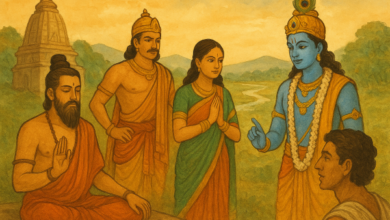Preserving Wancho identity in House of Stories
A school teacher in Arunachal village builds museum to tell stories of the tribe; his wife takes initiative to preserve local cuisine and jewellery
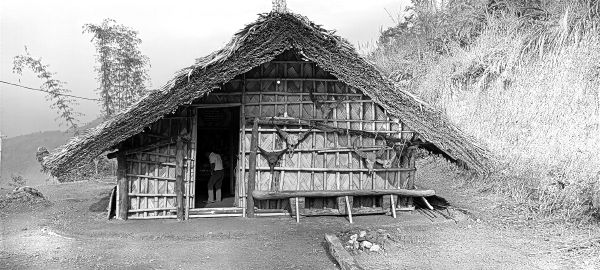
 Kamhua Noknu is a quaint village of the Wancho tribe in Longding district, Arunachal Pradesh. Hemmed in by forested hills, the village has stories and folktales that may whet one’s appetite for knowledge, and in so happening, Jatwang Wangsa, a local school teacher, is always happy to help.
Kamhua Noknu is a quaint village of the Wancho tribe in Longding district, Arunachal Pradesh. Hemmed in by forested hills, the village has stories and folktales that may whet one’s appetite for knowledge, and in so happening, Jatwang Wangsa, a local school teacher, is always happy to help.
Wangsa, one of the first in the village to be educated, loves to narrate stories about his ancestors and the tribe’s origin and settlement. Tamkai Kam, or House of Stories, is the result of his passion for preserving his ancestral history.
“The Wancho name, Tamkai Kam, means objects which connect us to our past or ancestry. In English, we can call it the House of Stories because each object in this museum has a story to tell. My wife, Toiman Pansa, suggested the name,” said Wangsa.
The ethnographic museum is housed in a traditional thatched structure with two entry and exit points. Several long pillars support the structure and the roof. The museum features different sections that showcase each aspect of the Wancho tribesmen and women’s lives and existence.
Collecting stories
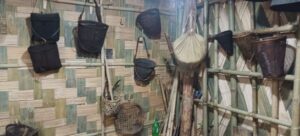
While the project is Wangsa’s brainchild, he calls it a community museum. “It became reality with the help of the villagers here and many others,” he said as he took the visitor around and explained the significance of each article.
Like most of the tribes in the world, the Wanchos have also been victims of the onslaught of modernity and the steady rural-urban migration for education and work. The new generation is gradually moving away from
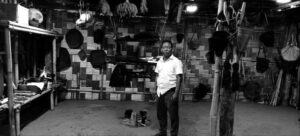
the culture and tradition and embracing new ways of life.
This bothered Wangsa. After much deliberation, he decided to set up a museum because “I strongly believed that it would be the best way to not only preserve our ancestors’ stories but also teach the youth about our tribe”.
He contacted a student, Manchaye Wangsu, who was an artisan, and requested him to make bamboo articles. “I also started collecting various articles of daily use. I found more than 100 traditional objects,” he said.
The thought of the museum started taking shape, and Wangsa, with the help of other villagers, decided to build it on a spare plot near his house.
“On January 13, 2025, I took a few craftsmen, gunmakers, basket weavers and potters to the Khonsa museum in Tirap district. It was their first visit to a museum, and they were amazed. This visit changed their perspective and piqued their interest in the museum project,” recollected Wangsa.
Storehouse of history
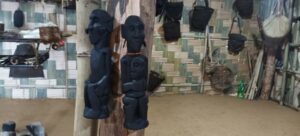
The museum has several articles — from kitchen wares, toys, hunting equipment, storage containers to traditional musical instruments. As Wangsa takes the correspondent around, he explains the significance of each article and narrates the story of his find.
There are containers made from wild gourds, which were widely used in the olden days for storing grains and seeds. The cane plate holders are a unique kitchen accessory of the Wanchos.
The museum also has a collection of rain covers, hats and war headgears — all made from bamboo and cane and ornamented with feathers and fur.
The wide collection of traditional toys is an interesting section in the museum. “I am still in the process of collecting these objects. It is a continuous process, but once I have a substantial collection, I will start labelling them. I also have plans to have audio assistance for visitors to understand the significance of each article,” he said.
Wangsa is a passionate photographer, and a collection of his photographs of rare occasions in the Wancho tradition is also featured in the museum.
Silent change-maker
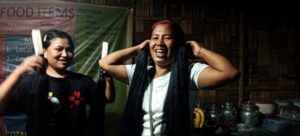
It is not just Wangsa who is trying to preserve the tribal tradition. His wife, Toiman Pansa, who is also a school teacher and mother of three daughters, does her part, albeit silently. She is a jovial person who keeps herself busy with household chores. Her treasure trove is the kitchen. Built in the traditional style, the kitchen effuses a kind of warmth that’s partly from the hearth and mostly from the heart.
Pansa is an expert cook. She runs a self-help group
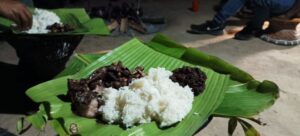
that promotes traditional Wancho recipes made from ingredients found in the nearby forests. The locally grown black garlic, a variety of seeds and leafy greens are a staple.
“We do not use oil. Most of our food is boiled or smoked. The pork fat is used to cook the meat,” she explained as she served a spicy chutney made of smoked fish.
Pansa is also a talented jewellery designer. She makes traditional jewellery with colourful beads. She also designs traditional women’s attire and scarves for both men and women. And she does all this silently, without even trying once to grab the limelight. Every time this correspondent tried to bring her on camera, she would shy away on the pretext of work.
“Her jewellery will also be a part of the museum collection,” informed Wangsa.
The husband-wife duo has been working hand in hand to protect and preserve the Wancho ways of life. While one is building the House of Stories for generations to come, the other is doing a yeoman’s job in keeping the culinary tradition warm on her home hearth.
“These are small efforts to strive forward, but together, these can make an impact,” said the otherwise media-shy Toiman Pansa as her husband, seated on a murrah near the hearth, nodded in agreement.
ALSO READ:



